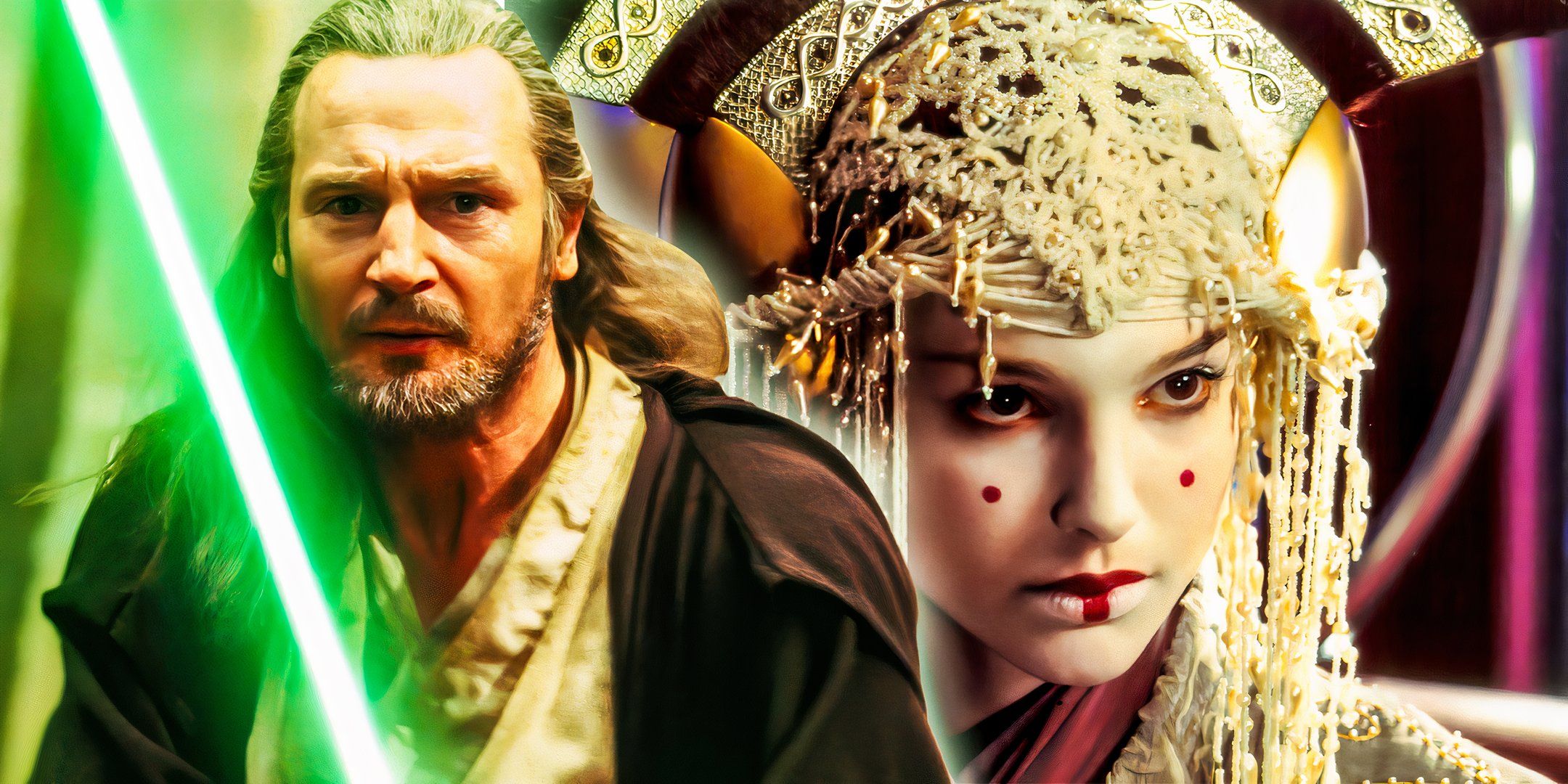
SUMMARY
The darkness of Coruscant symbolizes the heart of the Republic cloaked in shadows, particularly around Senator Palpatine.
Qui-Gon Jinn subtly calls out Padmé’s deception by showing he knows about her true identity and intentions.
The Phantom Menace emphasizes the theme of symbiosis, showcasing how the Naboo and Gungans form a crucial symbiotic circle.
Rewatching Star Wars: Episode I – The Phantom Menace on the big screen, 25 years later, reveals so many surprising details that truly show George Lucas’ genius. The Phantom Menace is 25 years old this year, and Lucasfilm celebrated the anniversary by re-releasing the movie in theaters. For many, this was a first opportunity to experience the prequels on the big screen.
There’s nothing quite like watching the magic of Star Wars on the big screen. George Lucas is a cinematic genius, and he created these movies for theater viewings, not for smaller TVs or handheld devices. That’s not to knock these experiences, of course; but they’re second (and third) best, and nothing more. Here are all the things I noticed rewatching the movie.
8The Darkness Of Coruscant Is More Important Than You Think
The city-planet is truly the center of darkness
My Star Wars journey is a little unusual. I watched the first Star Wars movie in the early ’90s, and fell in love with it; within days I’d picked up a book from a local book store, Timothy Zahn’s Heir to the Empire. This means elements of the Expanded Universe – say, Grand Admiral Thrawn or Coruscant – are as much a part of Star Wars to me as Lando Calrissian. When I first watched The Phantom Menace in 1999, I was too delighted to see Coruscant on the big screen to really notice what George Lucas was doing with the city-planet.
The Republic may be great and good, but its heart is already cloaked in darkness.
Rewatching, I realized just how much of the time Coruscant is shown to be in shadow. The Republic may be great and good, but the visuals show that its heart is already cloaked in darkness. Appropriately enough, the shadows are particularly deep around Senator Palpatine – the secret Sith Lord who operates in these shadows. Scenes at the Jedi Temple feel as though they’re set at dusk, symbolizing the end of the day and the coming of the night. It’s beautiful visual imagery.
7Qui-Gon Totally Knows About Padmé’s Deception
The Jedi Master just can’t help himself
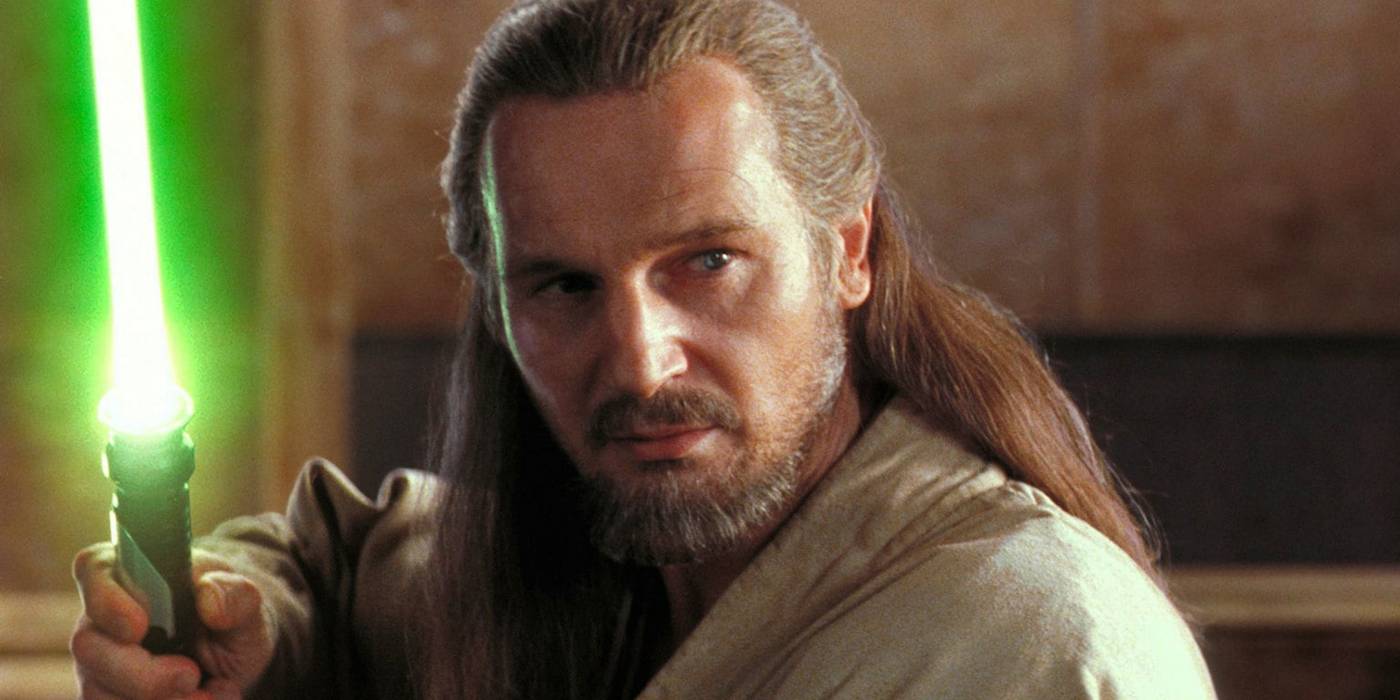
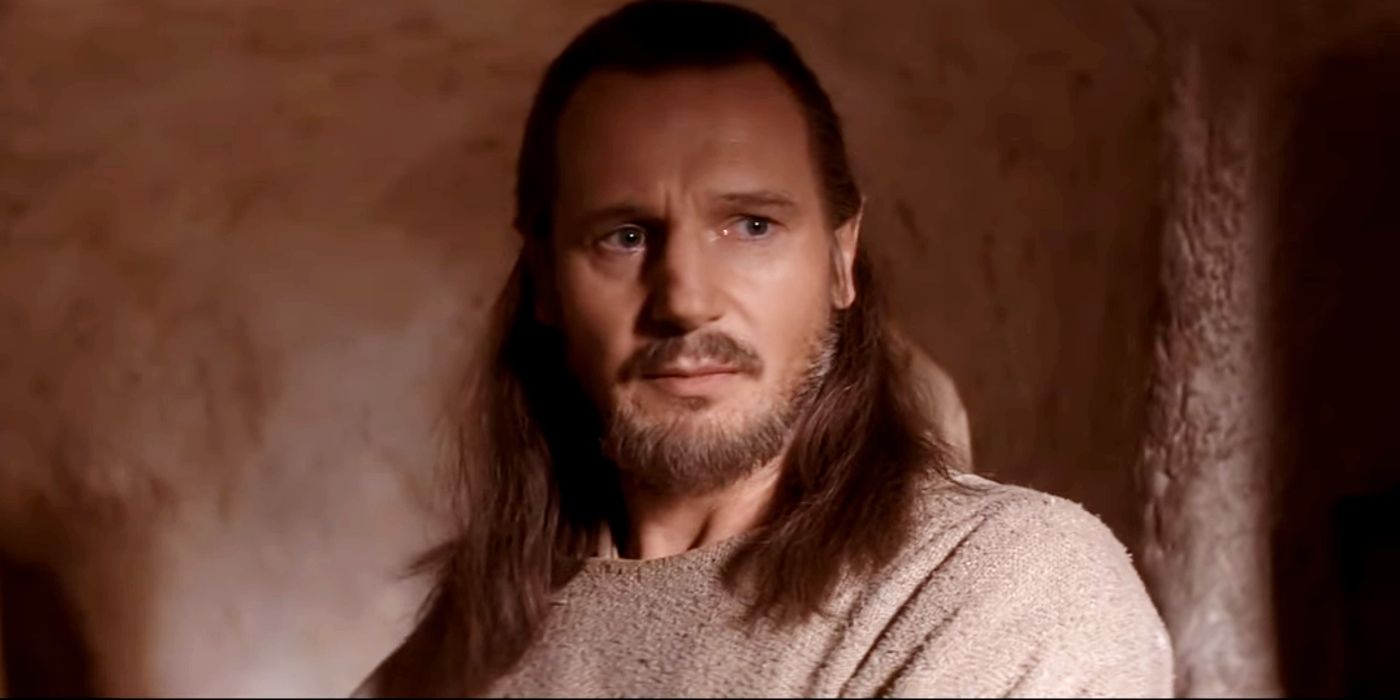
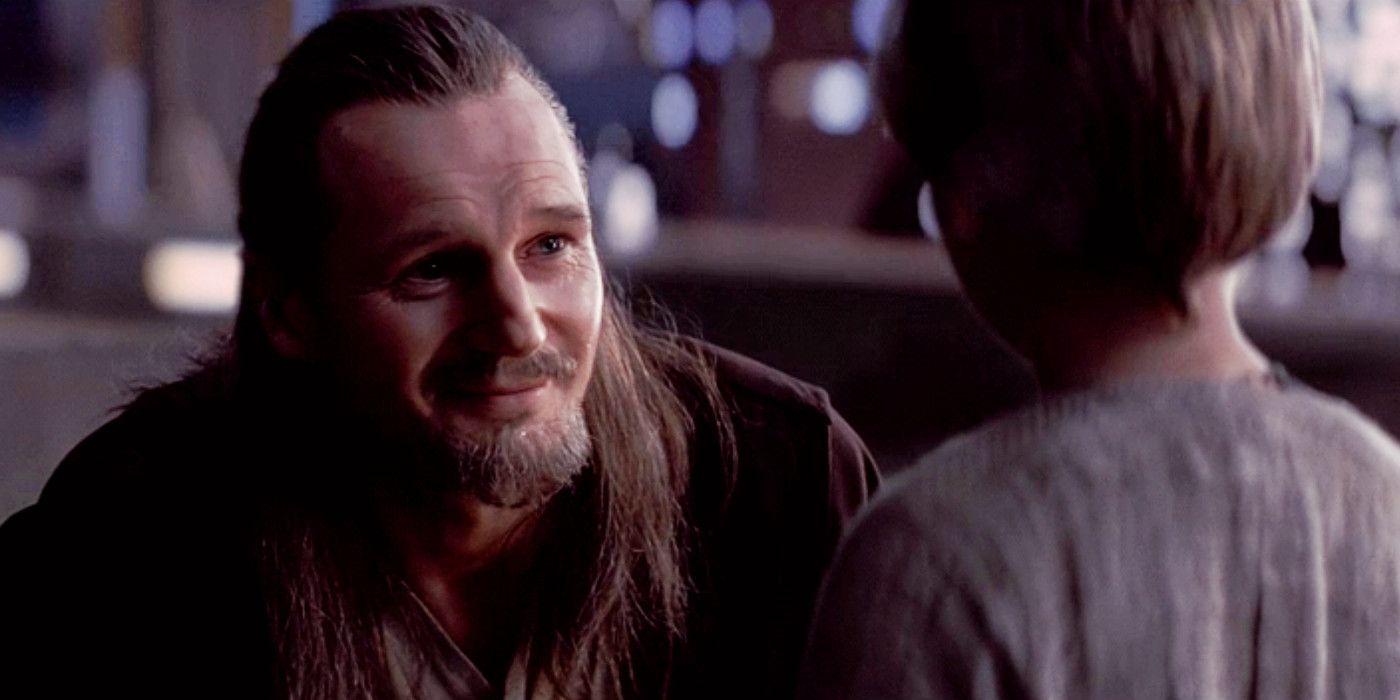
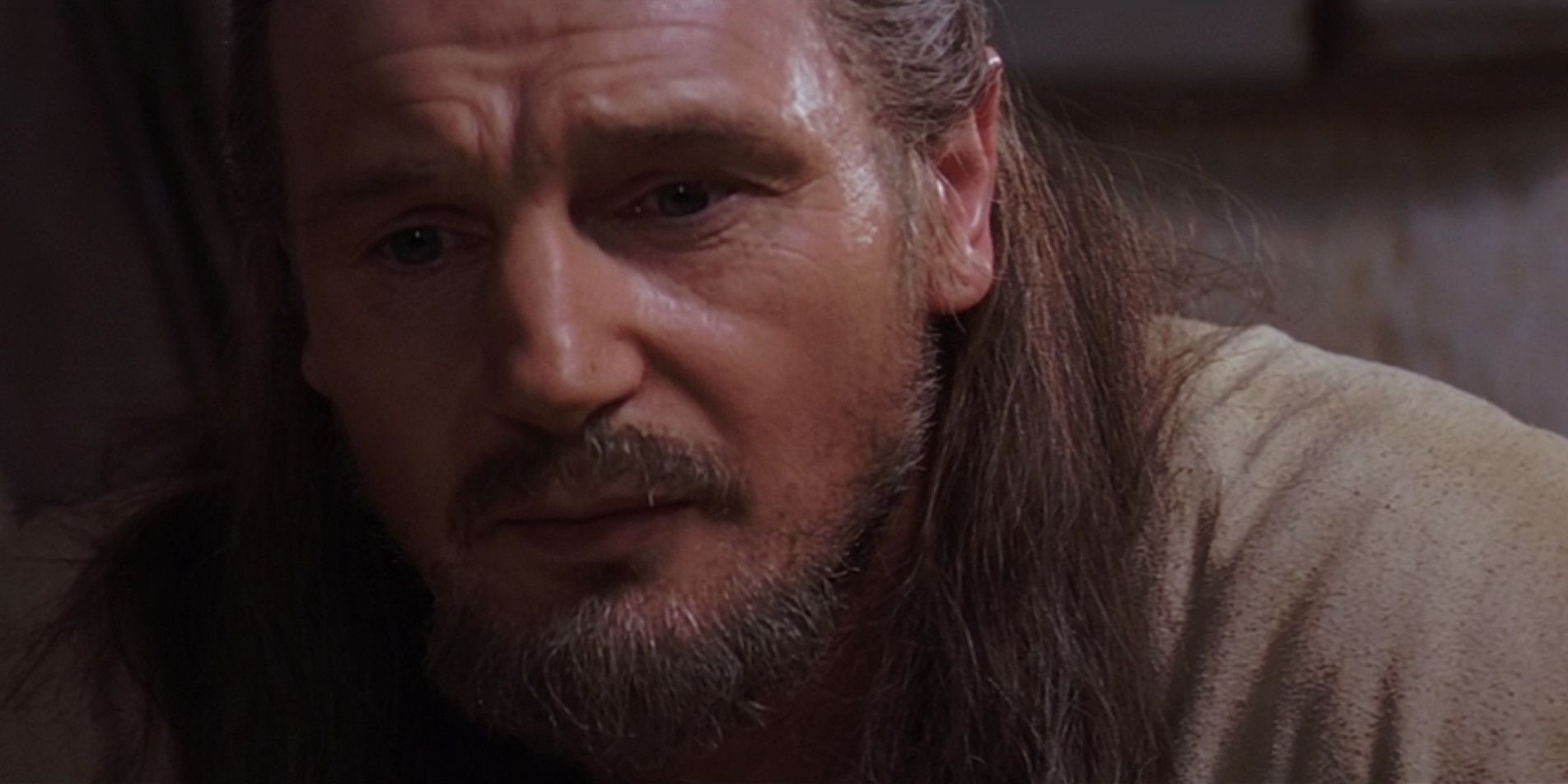
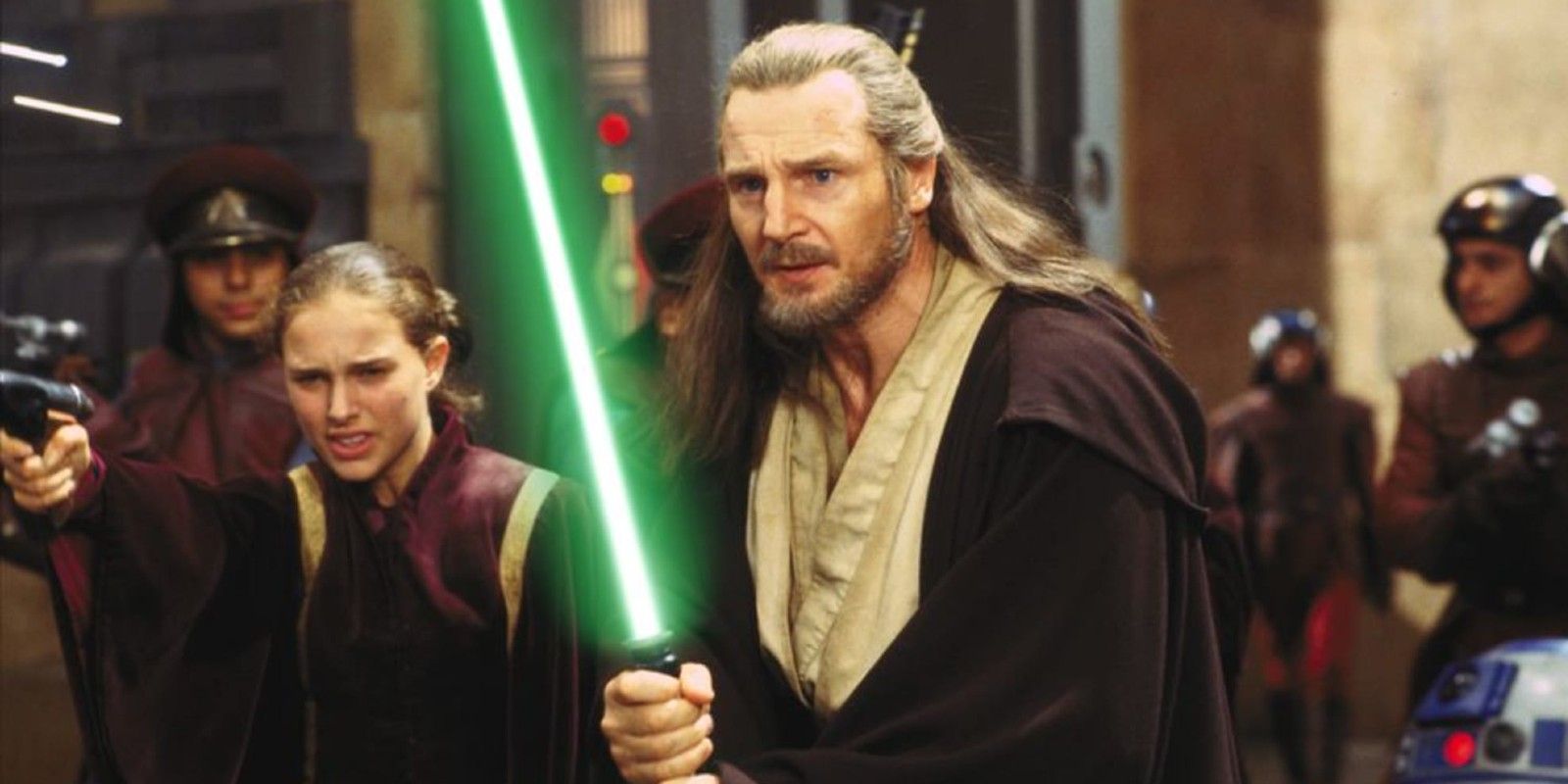
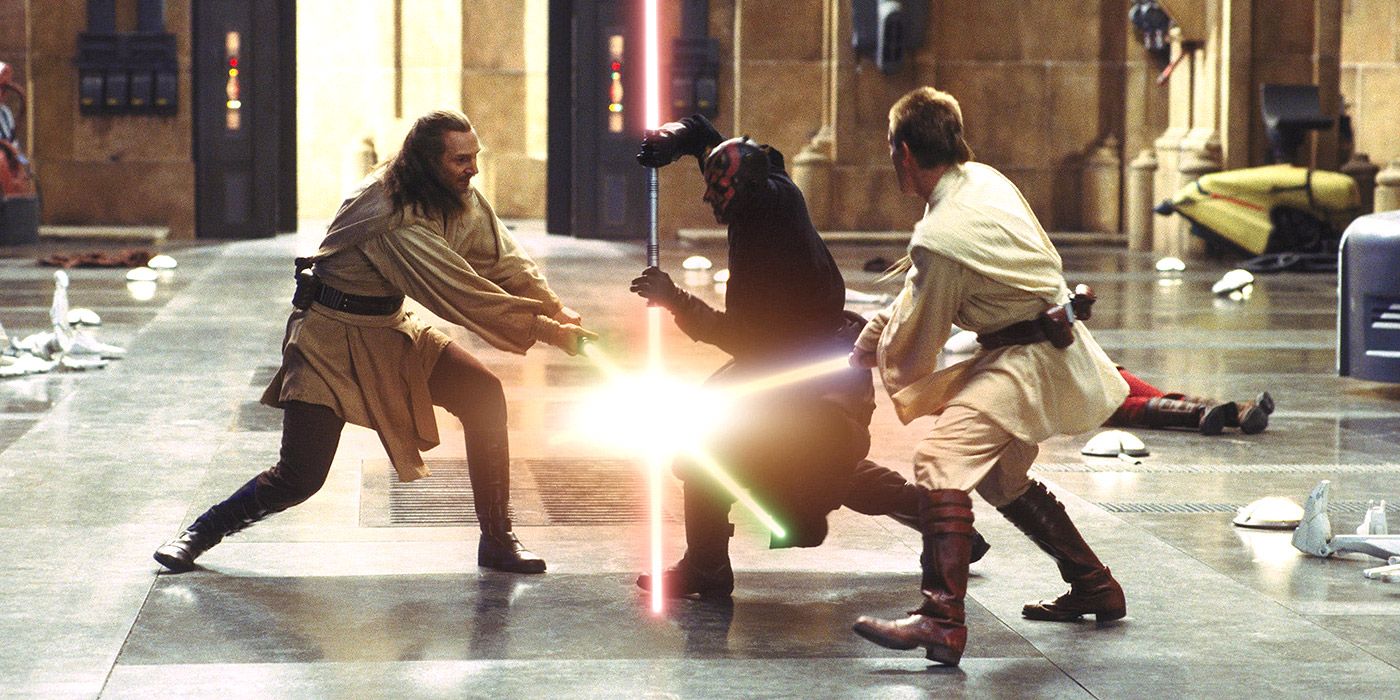
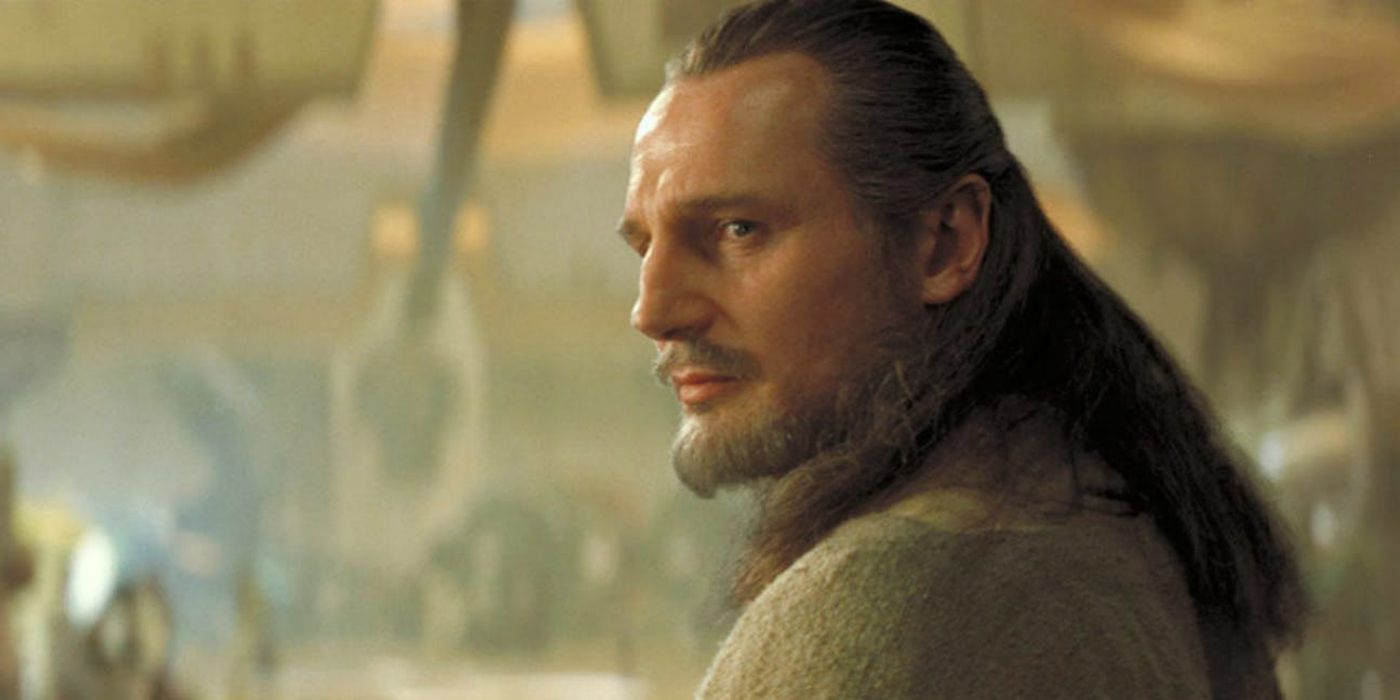
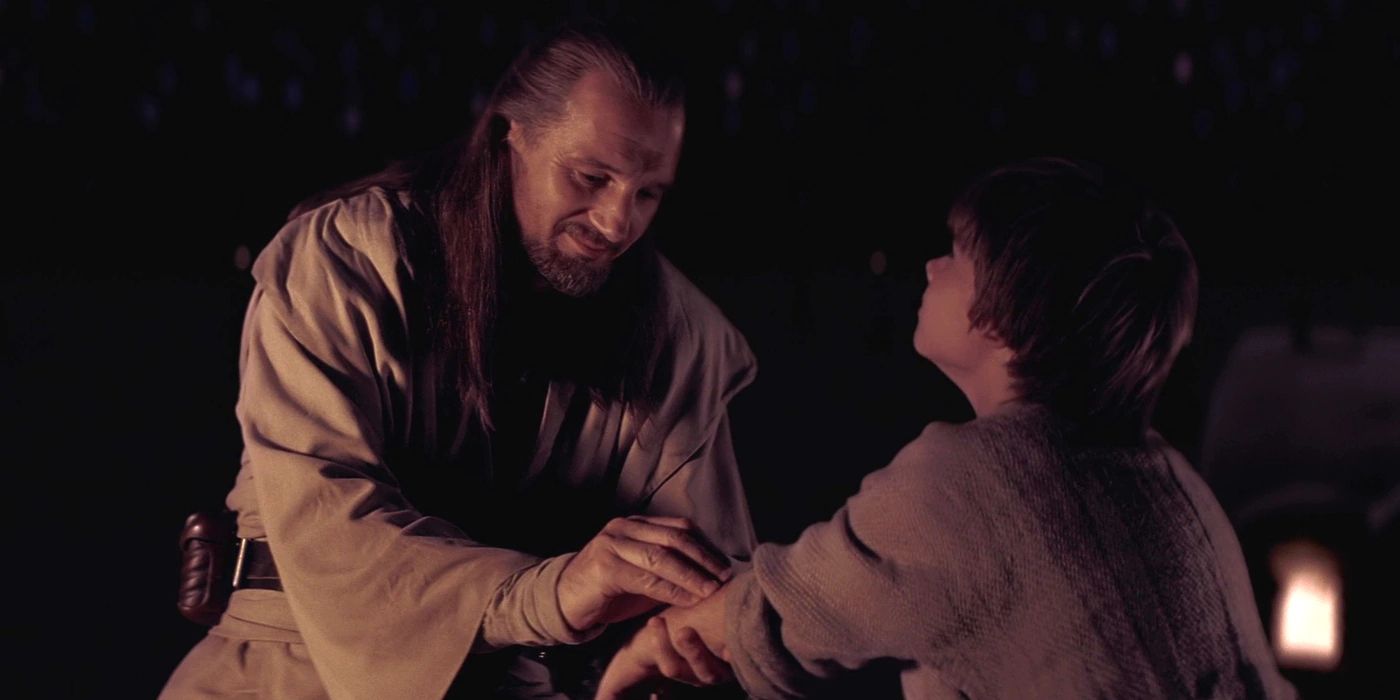
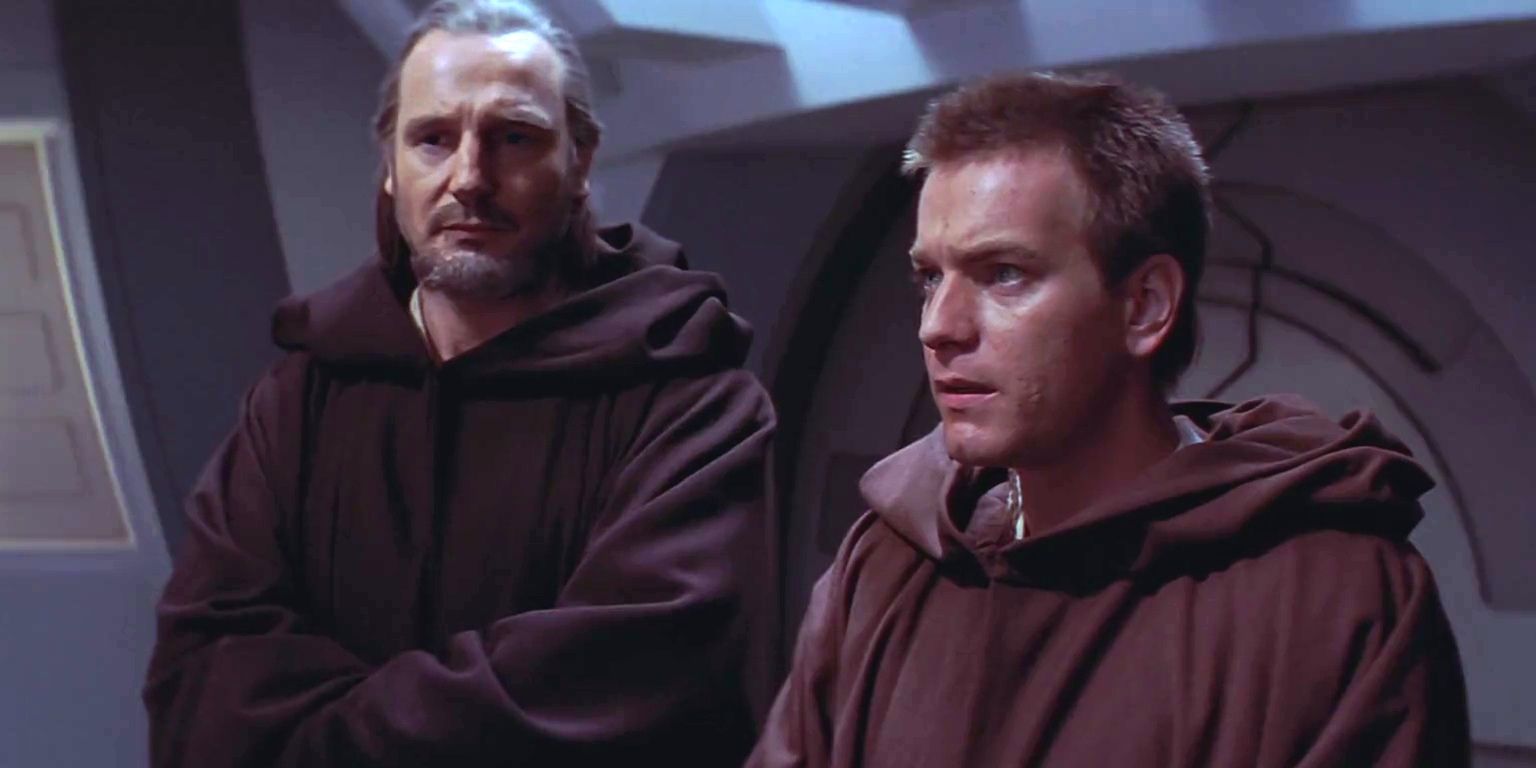
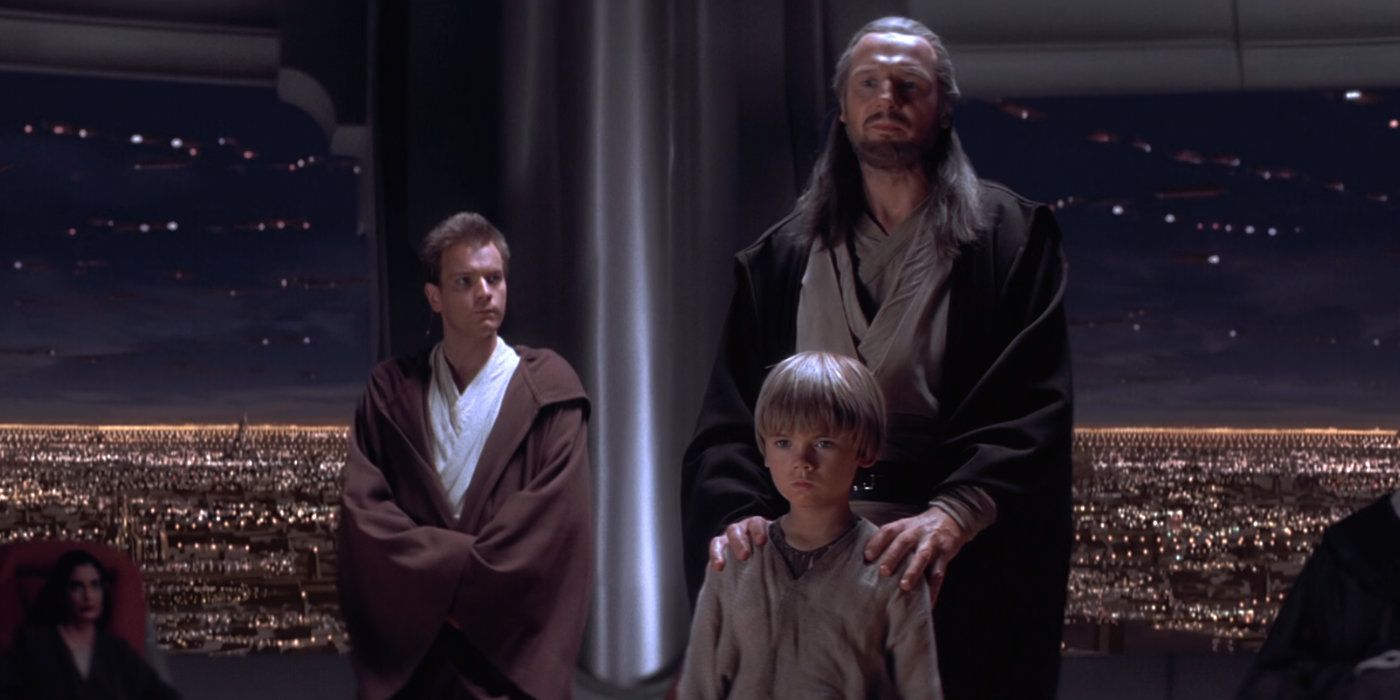










Viewers were taken aback when Padmé stepped forward before the Gungans, revealing she was in fact Queen Amidala and kneeling before them in an appeal for their aid. Rewatching, though, it’s striking how much Qui-Gon Jinn needles the supposed handmaiden while they’re exploring Tatooine. “The Queen will not approve,” Padmé insists at one point. “The Queen does not need to know,” Qui-Gon retorts, complete with a knowing smile. It’s as though he can’t resist playing with fire.
This dynamic resurfaces shortly afterwards, with Padmé again objecting to Qui-Gon’s decision to gamble everything on Anakin. “The Queen trusts my judgment, young handmaiden,” Qui-Gon interrupts her mid-objection. “You should too.” Putting these two scenes together, it’s amusing to speculate that Qui-Gon knew exactly who he was dealing with, and was subtly calling Padmé out; she could either trust his judgment or continue her deception, not both.
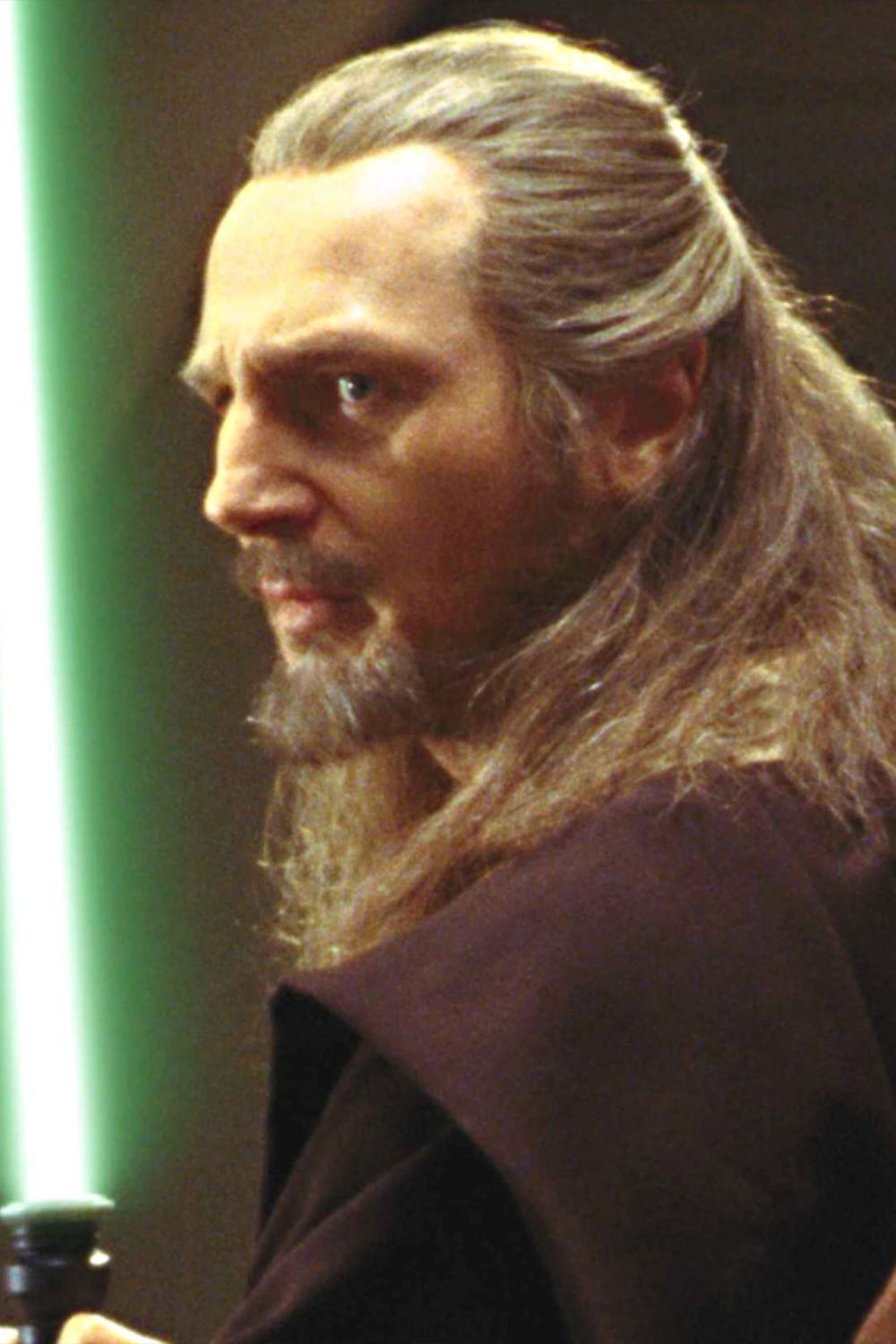
Qui-Gon Jinn
Viewed as a maverick Jedi, Qui-Gon Jinn was willing to learn from other Force traditions – and some of those lessons taught him how to retain his consciousness after death, becoming the first Force Ghost. Qui-Gon discovered Anakin Skywalker on Tatooine, recognizing him as the Chosen One, and swore to train the boy. This oath was passed to Qui-Gon’s apprentice, Obi-Wan Kenobi, after Qui-Gon was killed by Darth Maul. He remained influential from beyond the veil, however, teaching others how to follow in his Force Ghost footsteps.
Created ByGeorge Lucas
CastLiam Neeson
6It’s Taken Me 25 Years To Notice Yoda’s Character Arc
And Star Wars canon has completely missed it
What was Yoda’s greatest failing? There’s intense discussion about this in the fanbase, but one common argument – strongly supported by recent canon content – is that he didn’t consider the future enough. In fact, the modern Yoda has often been portrayed as someone who believed visions of the future were a potential path to the dark side, because they would tempt a Jedi to try to control events rather than submit to the Force’s will. But this flies in the face of his portrayal in The Phantom Menace.
When Obi-Wan first mentions Master Yoda to Qui-Gon on Naboo, he notes that the wise Jedi Grandmaster tells him to be mindful of the future; following Yoda’s advice, Obi-Wan senses what Qui-Gon does not, a shadowy distant force orchestrating events. It is Qui-Gon who drags Obi-Wan back to the present, insisting on living in the moment. Later, when speaking to Anakin, Yoda is the council member who tries to peer into the boy’s future and declares it to be clouded. Far from fearing visions and prophecy, Yoda embraces them.
How has Star Wars gotten Yoda so badly wrong? I think it’s because of Star Wars: Episode III – Revenge of the Sith, where Yoda cautions Anakin against trusting in his visions and dreams. But by then, the dark side has shrouded everything, and Yoda can’t see through it; he’s lost confidence, explaining his comments to Anakin. A generation of viewers have missed this subtlety, resulting in an odd inconsistency in Yoda’s portrayal.
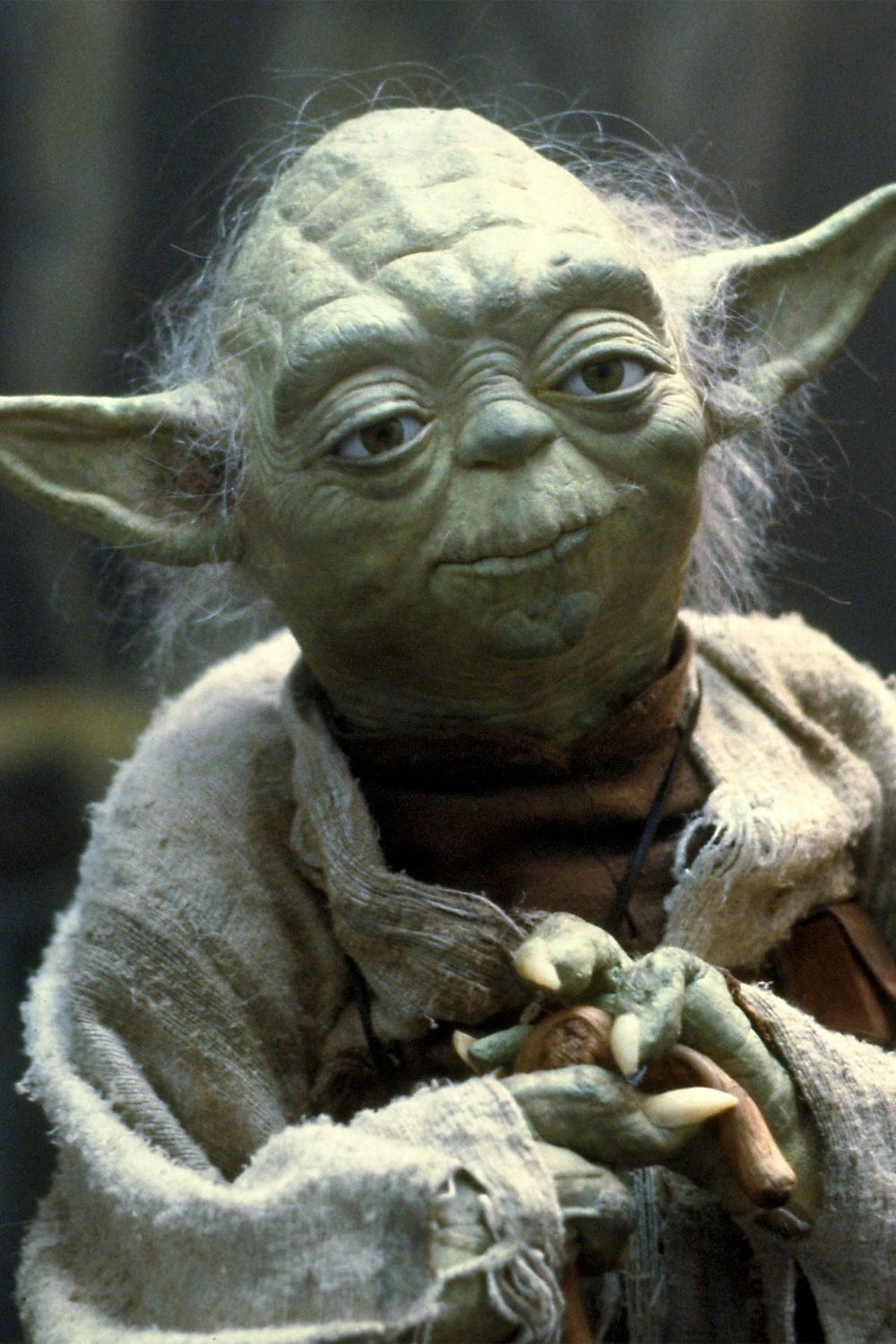
Yoda
The aged Jedi Master had trained Jedi for 800 years by the time he met Luke Skywalker on the planet Dagobah. One of the most famed and revered Jedi, Yoda served as Grand Master of the Jedi Order for centuries; he was powerful enough to duel Darth Sidious himself, although he was defeated. Yoda exiled himself to Dagobah, where he learned how to become a Force Ghost and offered guidance to Luke Skywalker.
Created ByGeorge Lucas
CastFrank Oz , Tom Kane
5In Fact, The Phantom Menace Is Obsessed With The Future
Especially when it comes to the Jedi
The Phantom Menace presents visions of the future as a core part of what it means to be a Jedi. When Qui-Gon speaks to Shmi, he notes that Anakin’s awareness of the future is the reason he’s a great podracer and pilot. “He can see things before they happen,” he notes. “That’s why he appears to have such quick reflexes. It is a Jedi trait.” To be a Jedi is to be sensitive to the will of the Force – and the direction in which it is headed. It’s even how a Jedi is able to block blaster bolts.
There is a subtle irony, then, in the fact Qui-Gon is the one who truly believes Anakin is the prophesied Chosen One. Qui-Gon was the one who told Obi-Wan to focus on the moment, and yet he becomes captivated by a dream of the future, one in which the Force has been brought into balance through Anakin. He’s right, of course, but it’s amusing to note the Jedi who wanted to live in the moment is the one who perceives Anakin’s ultimate future.
4Mace Windu Changes His Mind About The Sith
Mace seems to have a secret character arc
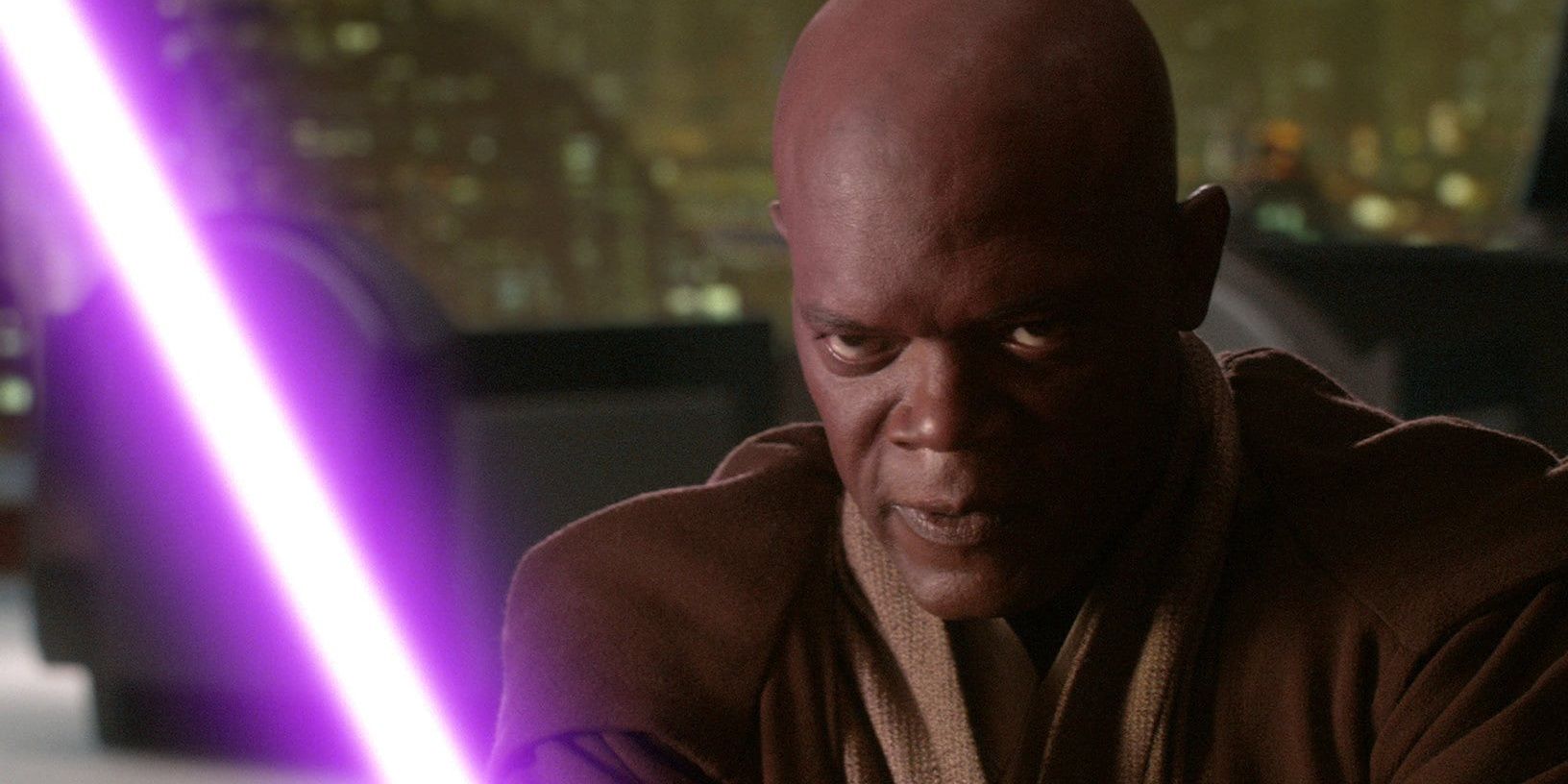
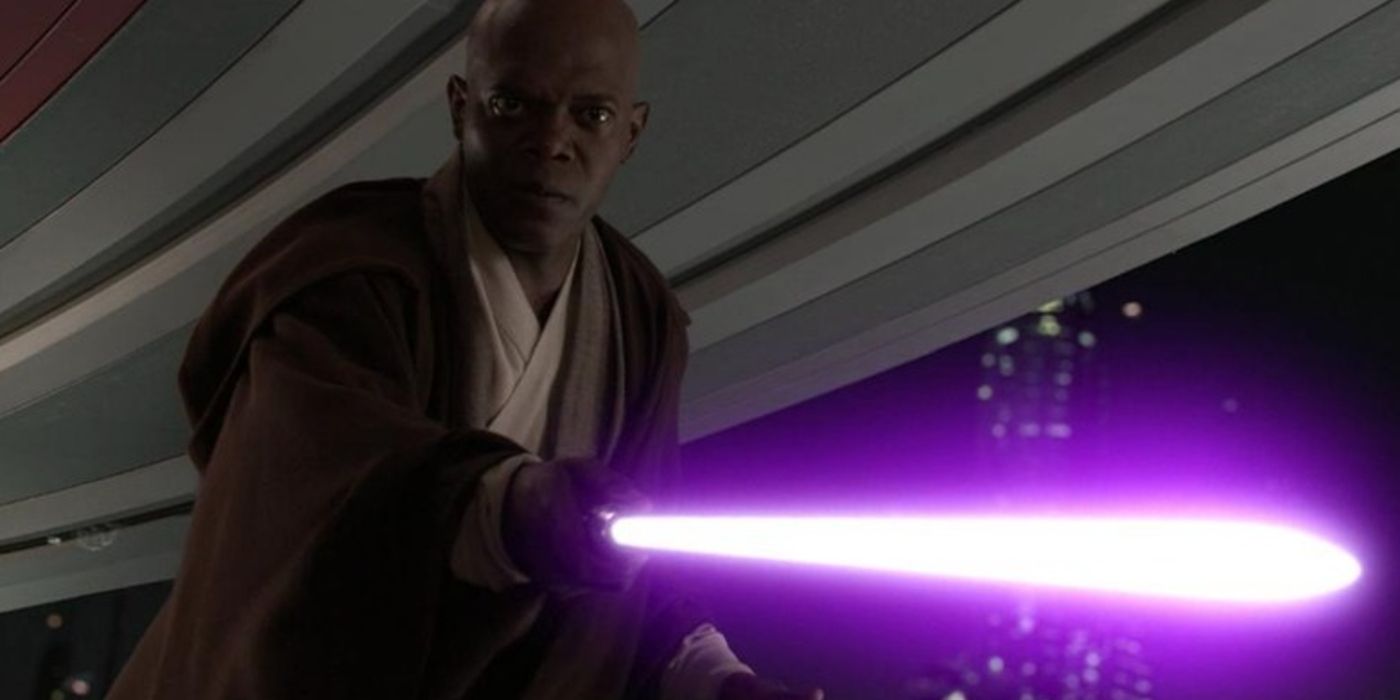
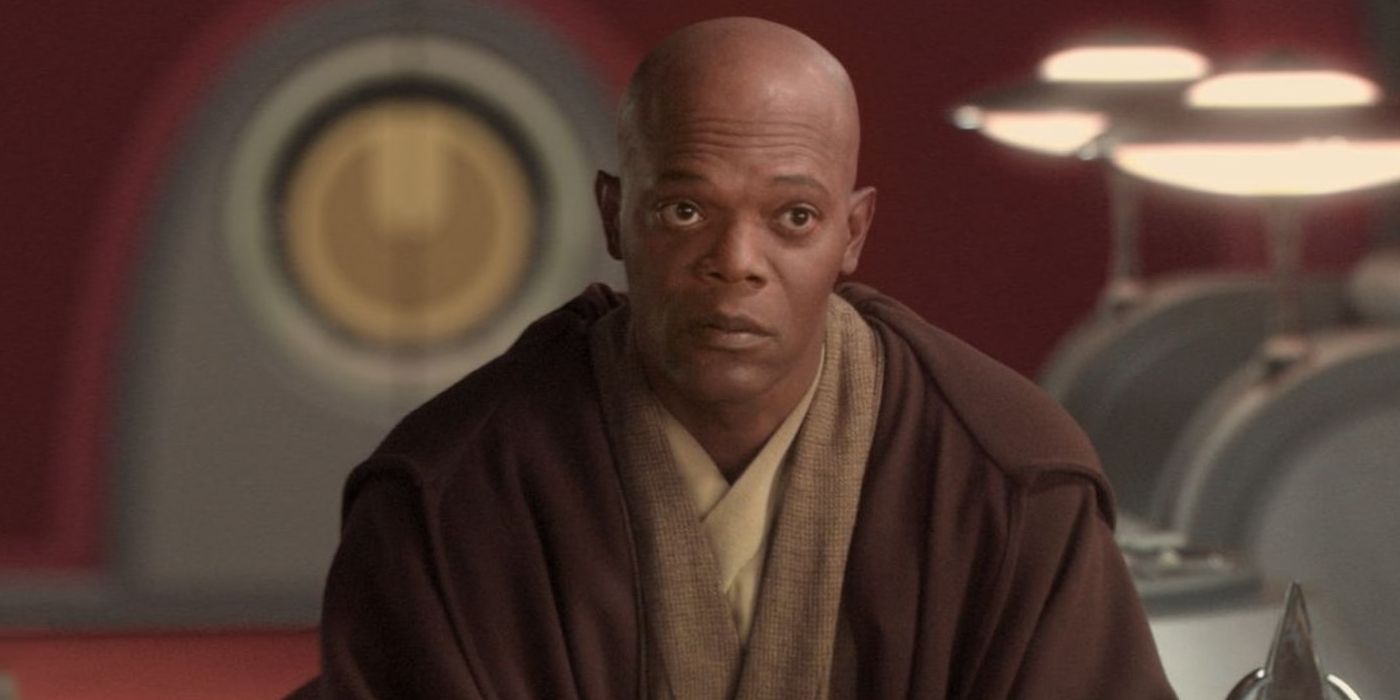
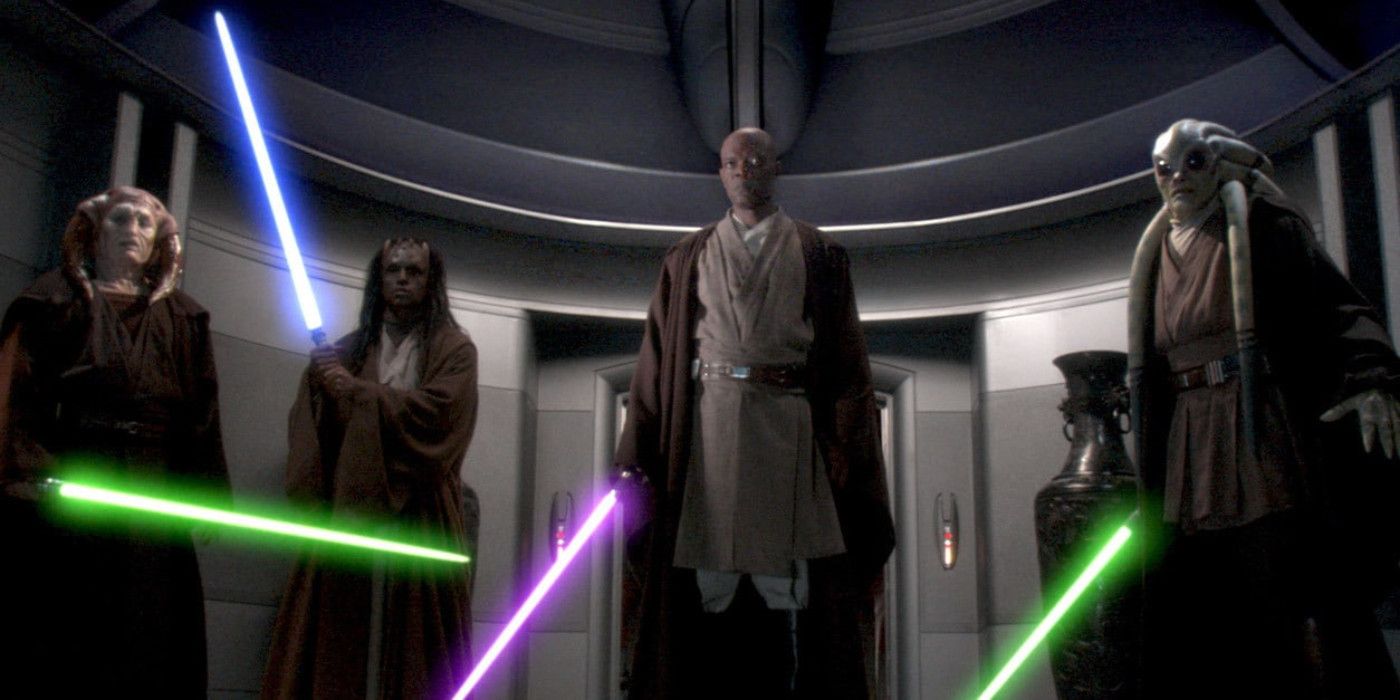
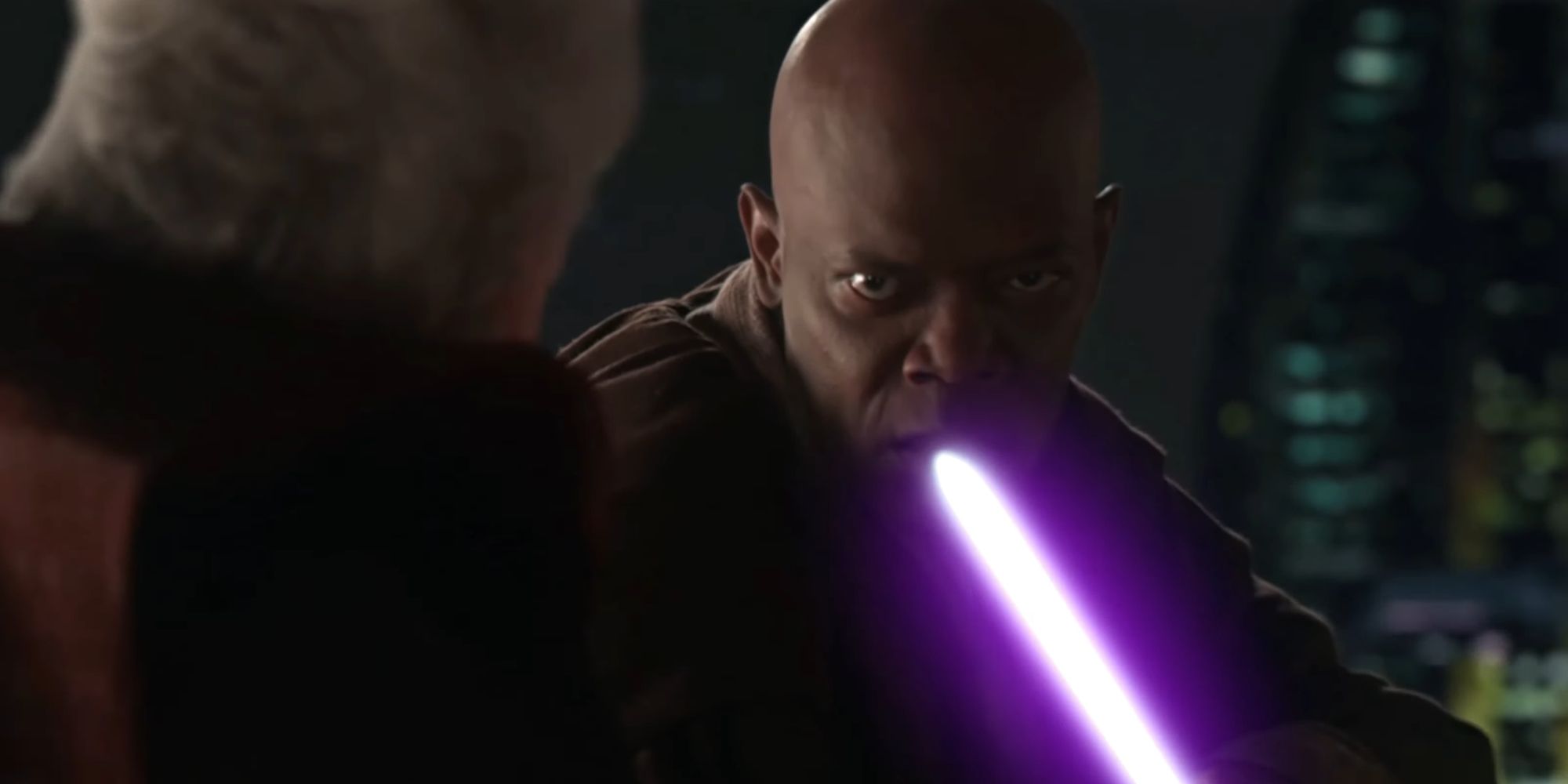





Samuel L. Jackson’s Mace Windu only gets a few scenes in The Phantom Menace, and he doesn’t even get to use his trademark purple lightsaber yet. The few scenes he does have are important, though. When the Jedi Council meet with Qui-Gon Jinn, Mace refuses to consider that the Sith are back; “I do not believe they could have returned without us knowing,” he says. Later, though, Mace isn’t so sure; he tells Qui-Gon to go to Naboo “to unravel this mystery of the Sith.“
It’s not explicit, but it really does feel as though Mace Windu has undergone a change of heart. He doesn’t refer to a dark side attacker, but instead implicitly acknowledges that Qui-Gon’s opponent may well be a Sith. It’s unclear why Mace has become open to the idea; is it a result of meditations in the Force, discussion between members of the Jedi Council, or the revealing of something off-screen that’s never been shown? Perhaps The Acolyte – a prequel Disney+ TV show to The Phantom Menace – will provide an answer.
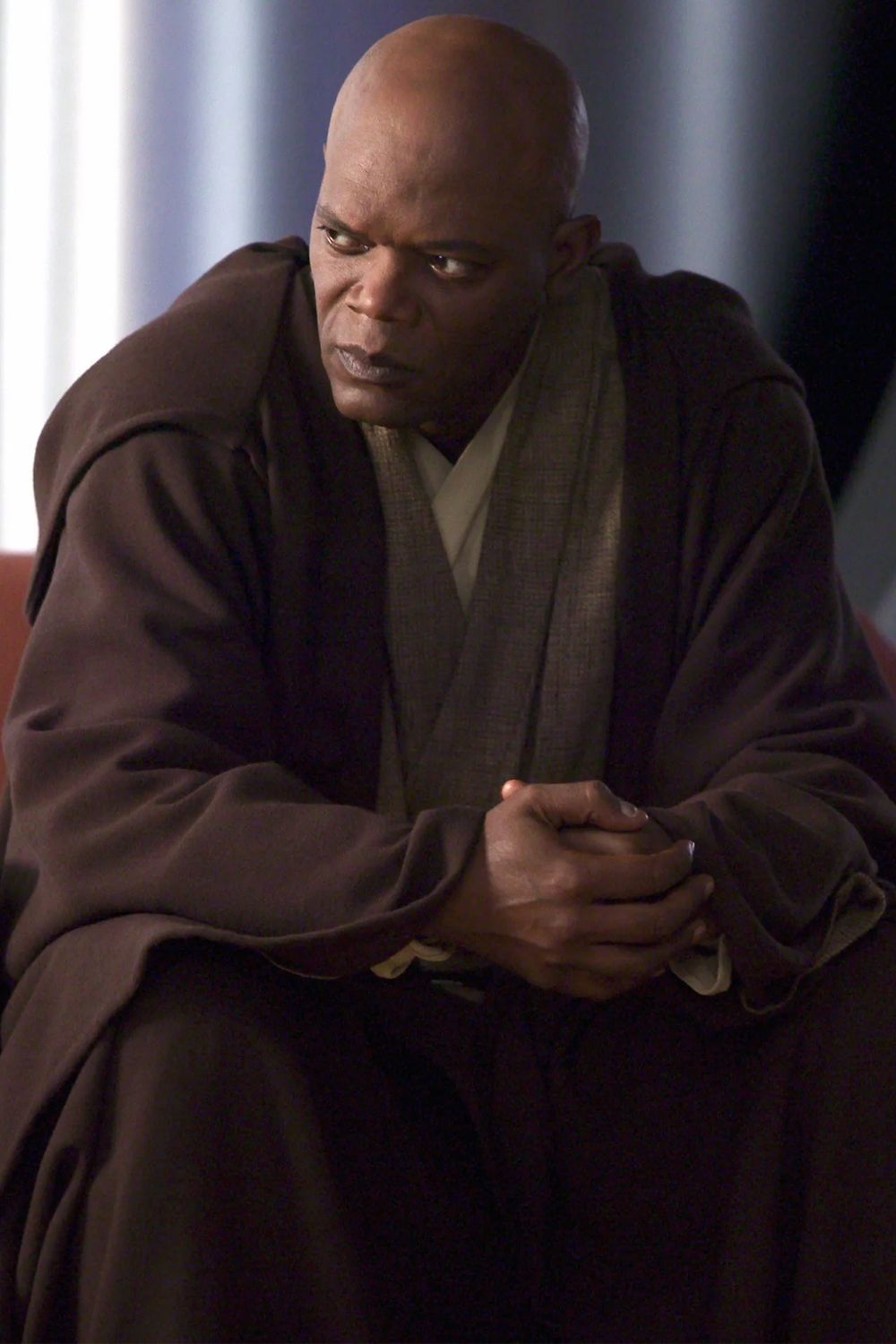
Mace Windu
One of the most prominent Jedi during the prequel era, Mace Windu served as a crucial member of the Jedi Council, considered second only to Yoda himself. Windu was a remarkable figure among the Jedi, having turned his own temptation toward the dark side to his advantage, even creating a new lightsaber form known as Vaapad. Mace ultimately failed in his mission to protect the Jedi, apparently killed by Palpatine and Anakin Skywalker at the end of the Clone Wars.
Created ByGeorge Lucas
CastSamuel L. Jackson
3The Grand Army Face Battle Droids
It’s perfect setup for the Clone Wars
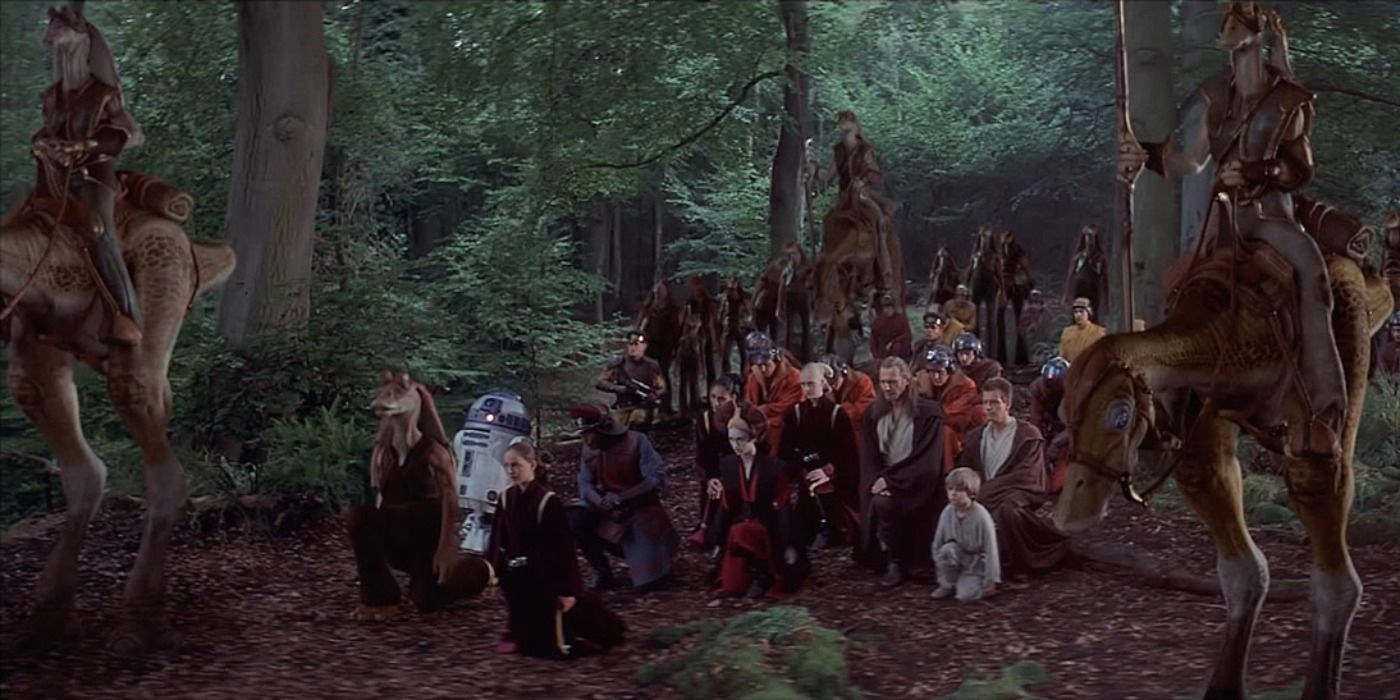
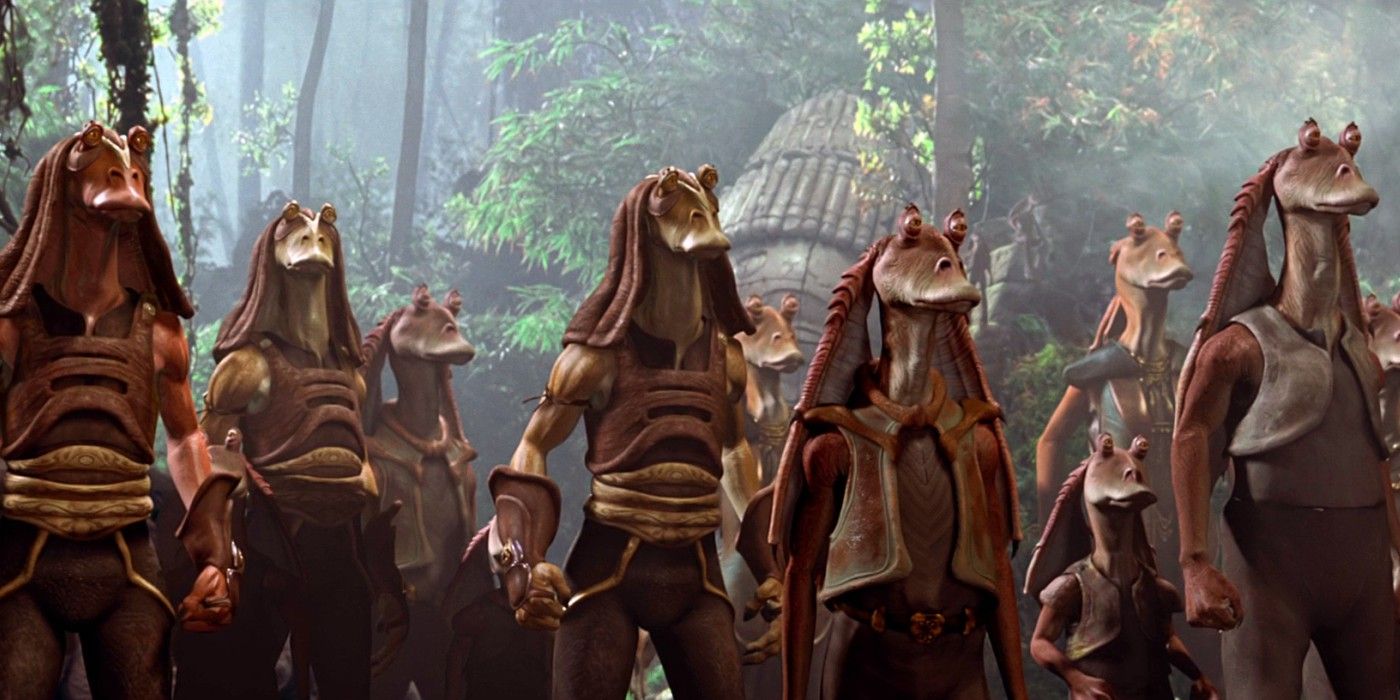
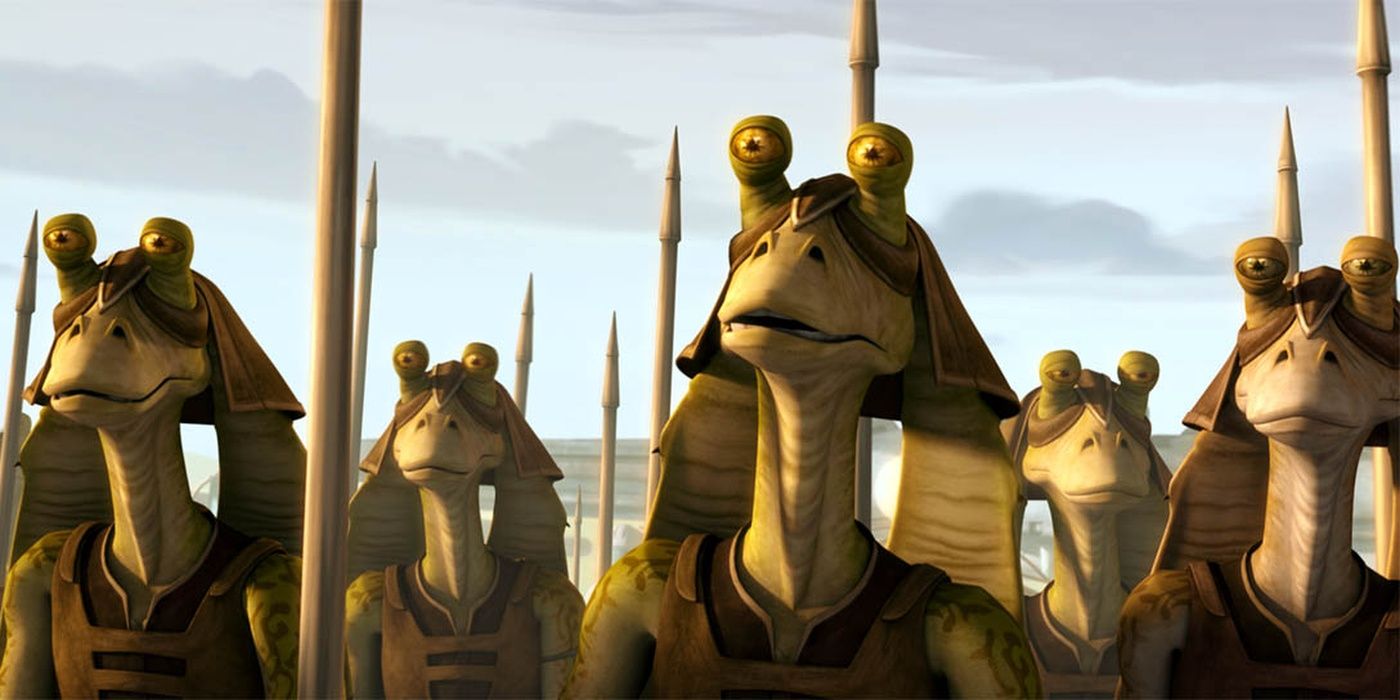
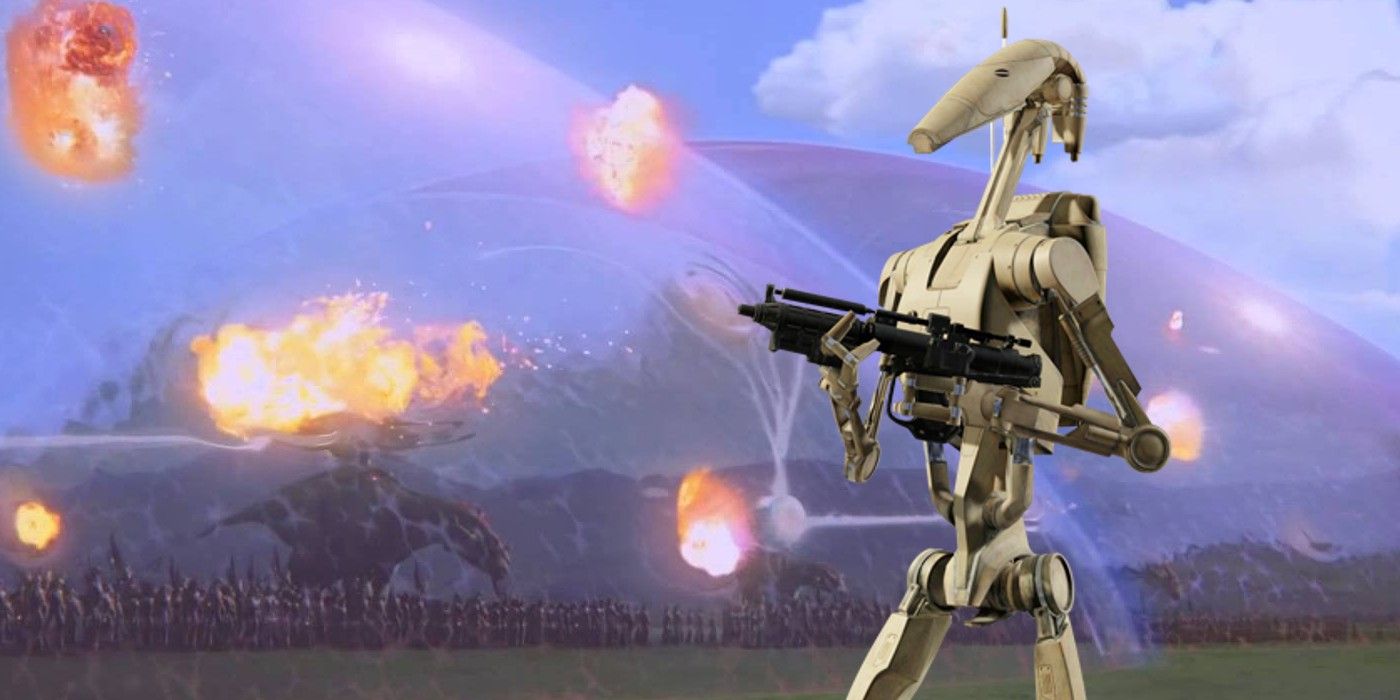
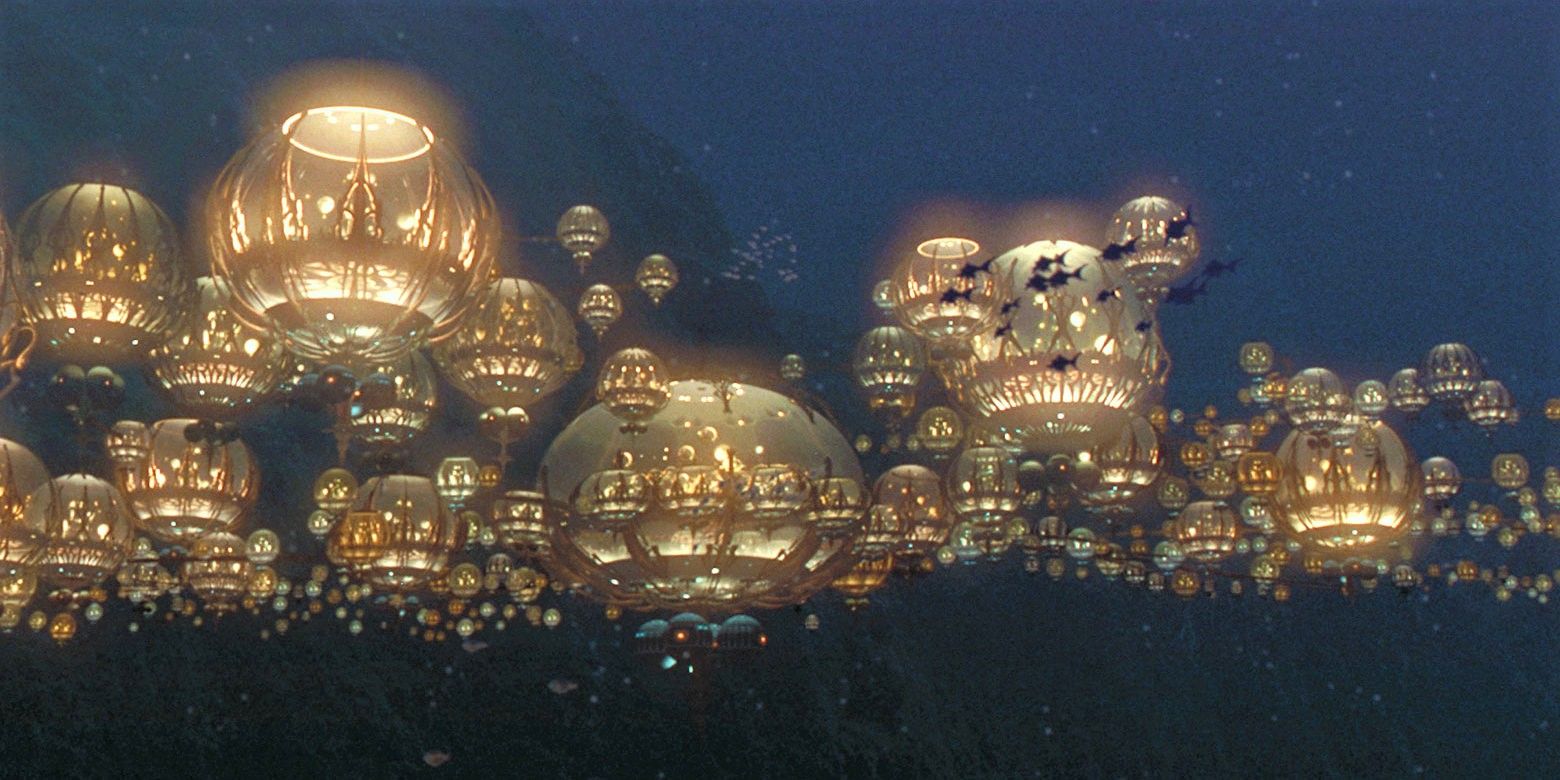





There’s something quite ruthless about Padmé’s plan in The Phantom Menace. Because she lacks an army herself, she approaches the aquatic race of Gungans and asks to use their “Grand Army” as a distraction to take on the army of battle droids, while she takes the steps that are really necessary to bring her opponents down. This means many Gungans die, but few Naboo are actually in the line of fire at all.
Palpatine himself essentially repeats this plan with the Clone Wars.
There’s a good reason this sounds so very familiar; Palpatine himself essentially repeats this plan with the Clone Wars. Because the Republic lacks an army, he uses the disposable clones of the waterworld Kamino – even christened the “Grand Army of the Republic” – to take on the battle droid armies of the Separatists. Meanwhile, he takes the steps that are truly necessary to bring his opponents down. Padmé is a lot more like Palpatine than she thinks, and that’s quite a chilling realization.
2I Finally Understand Why Darth Maul Has A Double-Bladed Lightsaber
The details of the fight choreography had escaped me
Darth Maul’s double-bladed lightsaber has always been the epitome of cool. He wasn’t the first Sith Lord to use such a blade, of course; the idea was created for the EU, with Exar Kun wielding a double-bladed lightsaber and Lucas loving the design. But there’s a lot more Darth Maul’s lightsaber than simply the “Rule of Cool.” It’s actually a crucial tool to the Sith Apprentice, as becomes clear when closely examining the stunning fight choreography.
Although the Sith follow the Rule of Two, Darth Maul is trained to act alone – ensuring his master never risks revealing himself. Darth Sidious intended his apprentice to hunt down two-man teams of Jedi, and equipped him well for the task. It’s notable that Maul only triggers the double-bladed lightsaber when he’s facing two Jedi, not one, and he then uses it for defense as much as offense; he blocks one attacker, while sweeping in at another of his opponents. It’s the perfect weapon for dealing with a Jedi Master and a Padawan at the same time.
1The Phantom Menace’s Greatest Theme Is Symbiosis
Lucas is deeply invested in symbionts
I’d never truly appreciated just how much The Phantom Menace focuses in on the theme of symbiosis. It’s most visible in Qui-Gon’s comments about midi-chlorians, where he describes Force-sensitives as existing in a state of symbiosis with these microscopic organisms. “Life forms living together for mutual advantage,” Qui-Gon explains. “Without the midichlorians, life could not exist and we would have no knowledge of the Force. They continually speak to us telling us the will of the Force.”
Think of the planet Naboo itself as a visual aid, because – as Qui-Gon notes – the Naboo and the Gungans “form a symbiont circle.” The Naboo are the surface-dwellers, the beings you see, the ones after whom the planet is named. It’s not a coincidence that the Naboo have representation in the Senate, but the Gungans do not. And yet, the strength of Naboo lies with the Gungans, the ones who are capable of resisting the Trade Federation army. They are the spiritual beings, retaining faith and mysticism, as opposed to the Naboo – who live in lavish cities, separated from nature.
We tend to look at the Naboo through far too romantic a lens, largely because of Padmé. We miss the fact that relations between the Gungans and the Naboo have broken down, breaking the symbiont circle. Worse still, Palpatine himself – the most powerful Sith Lord – is of the Naboo, originating from a place where the symbiosis has been damaged. It is only by restoring relations with the Gungans that Padmé defeats the Sith Lord’s Machiavellian plan.
Circling back, this is why Coruscant is the heart of darkness. It is a place without symbiosis, where civilization has been completely cut off from the natural world and from any sense of right and wrong. Palpatine is able to flourish on a city-planet, working to undermine the Jedi, corrupting the heart of the Republic. Star Wars: Episode I – The Phantom Menace sets this up beautifully – and it is so very significant that the Empire will ultimately be defeated on Endor, a Forest Moon, when the technological heroes of the Rebel Alliance unite with the native Ewoks. Symbiosis is restored.





